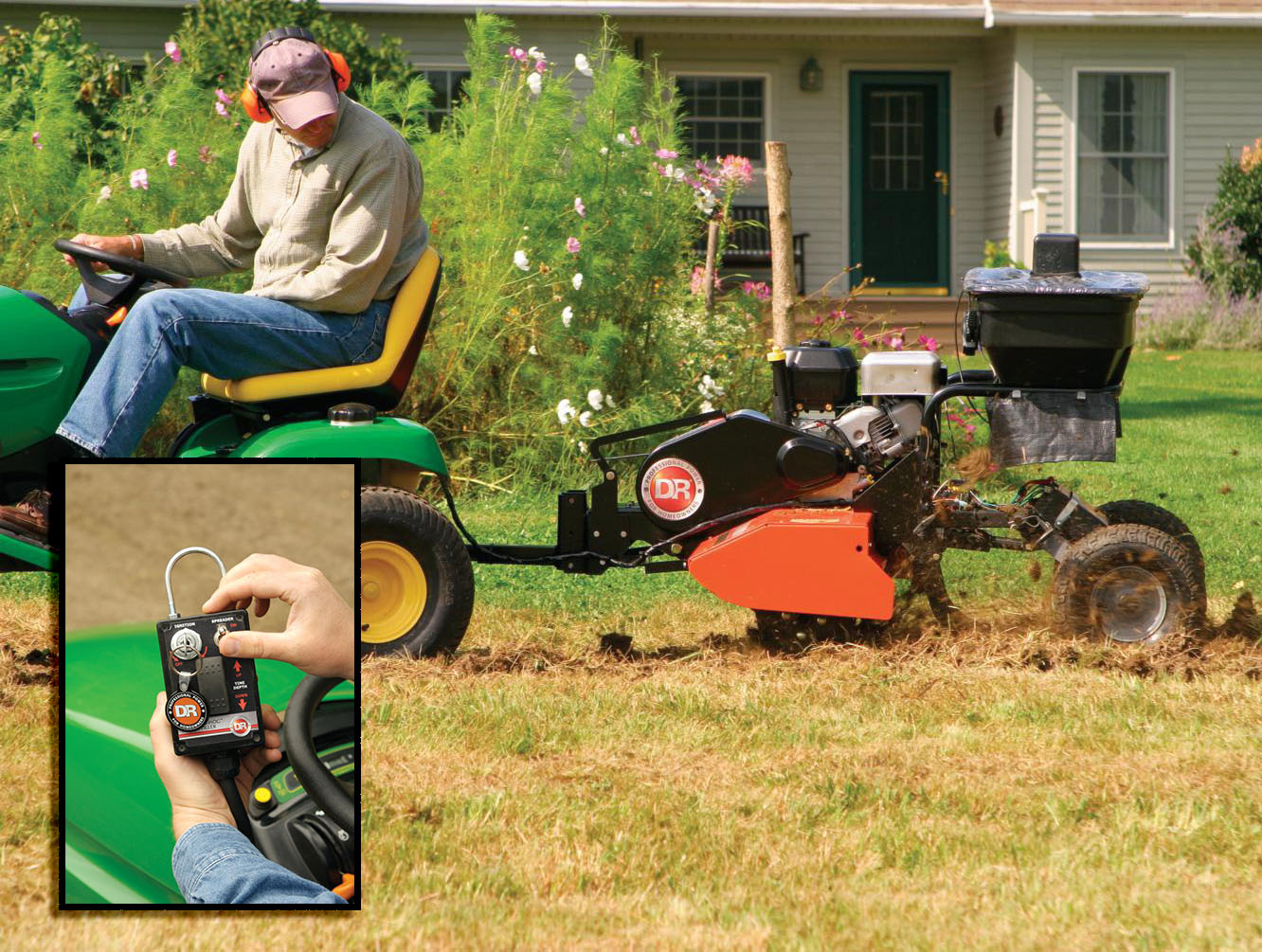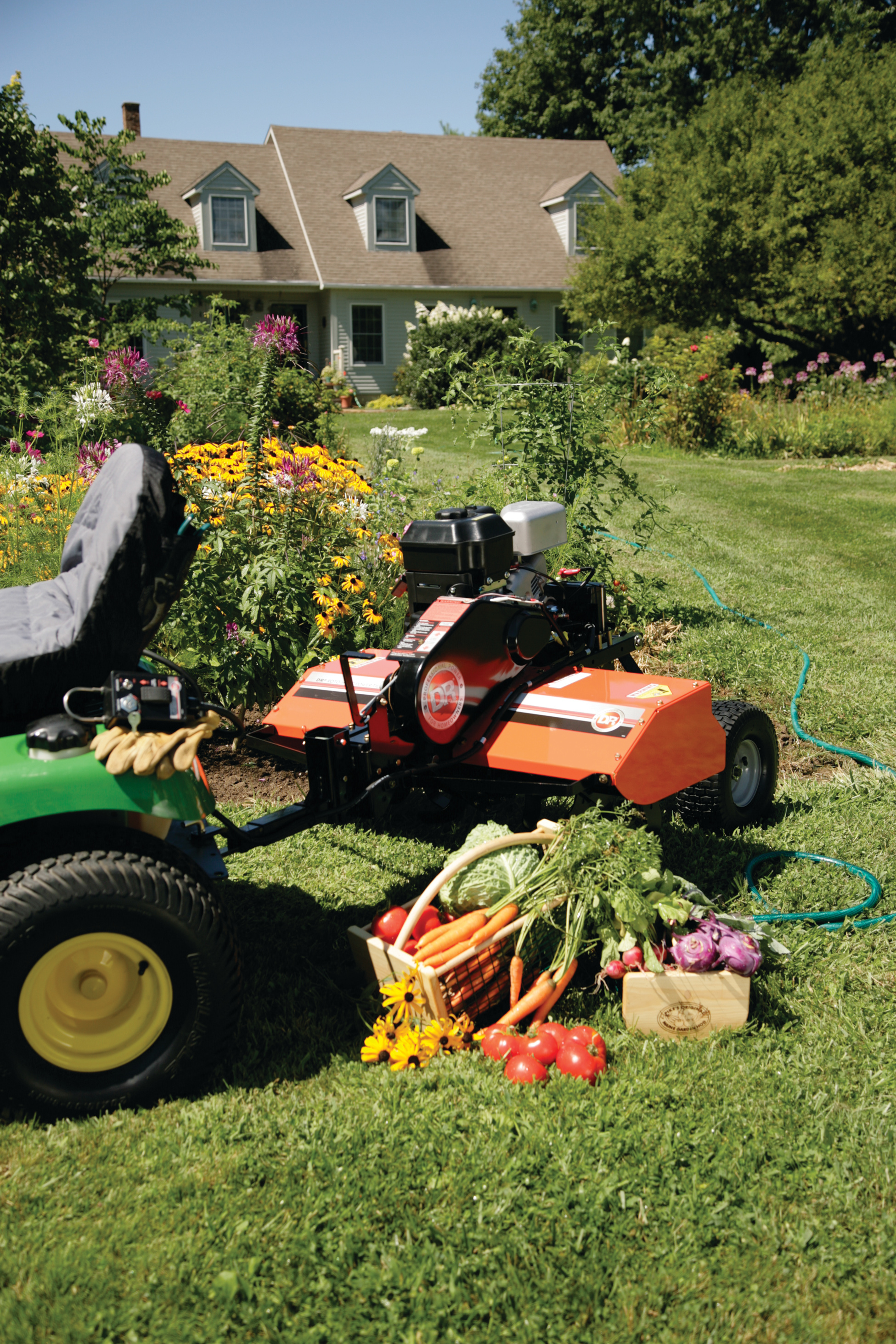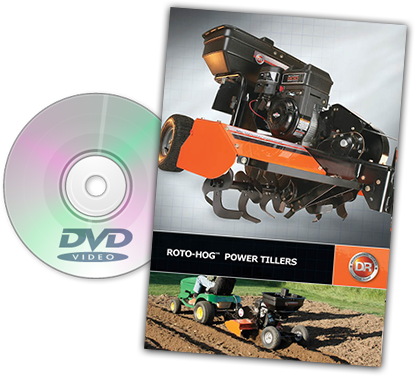3 Reasons to Adjust Your Tilling Depth
 One of the most useful features of the DR Roto-Hog Power Tiller is that it allows you to adjust your tilling depth as you work. On the Pro model, this can even be done right from your towing vehicle with a remote control (the Premier uses a manual lever). But you may be wondering, why do I need to adjust my tilling depth? Is it necessary? Yes! Adjusting your tilling depth is essential to getting the right till for your conditions. We have found these to be the top 3 reasons to adjust your tilling depth:
One of the most useful features of the DR Roto-Hog Power Tiller is that it allows you to adjust your tilling depth as you work. On the Pro model, this can even be done right from your towing vehicle with a remote control (the Premier uses a manual lever). But you may be wondering, why do I need to adjust my tilling depth? Is it necessary? Yes! Adjusting your tilling depth is essential to getting the right till for your conditions. We have found these to be the top 3 reasons to adjust your tilling depth:
Break through tough soil or sod.
Adjusting your tilling depth is essential if you are trying to till through particularly tough soil, or breaking through sod to create a new garden or flowerbed. For breaking through sod, we recommend the extra power of the Pro model Roto-Hog. Whether putting in a new garden or tilling through the tough ‘crust’ that sometimes forms on top of an existing garden, start by tilling at a more shallow depth, and lower it a bit with each pass. The number of passes required will vary depending on your soil. If you work slowly and don’t push to go deeper than the soil will allow, you’ll be able to tackle any tilling task with your DR!
 Prepare for your specific crops.
Prepare for your specific crops.
Some plants put down particularly deep roots, while others have more shallow root systems. If you know what types of crops you’ll be planting, you can till to the conditions they’ll need. For deep-rooted plants such as tomatoes, asparagus, squash, and parsnips, till as deeply as possible. For more shallowly rooted plants such as lettuce, onions, broccoli, spinach, and the majority of flowering annuals, you can till more shallowly. Look at your seed packets or seedling information for specifics about your crops.
Till in compost or fertilizer.
When adding compost, fertilizer, or just about any other soil amendment to your garden, you probably layer it on top of the soil and then till it in, right? Your amendments will be spread more evenly, though, if you vary your tilling depth. Try laying compost on top of the soil, then tilling deeply on the first pass, then more shallowly on the second pass to disperse the compost more evenly. Or, spread half the compost, till it in deeply, then spread the other half, and then till more shallowly. Whichever method you prefer, adjusting your tilling depth will ensure that your soil amendments are well-tilled in and ready to maximize your garden’s performance.
Want to learn more about DR Roto-Hog Power Tillers?
Order your FREE Buyer's Guide & DVD!

What's inside
- 24-Page Buyer's Guide
- Action-Packed DVD
- Money-Saving Promotions